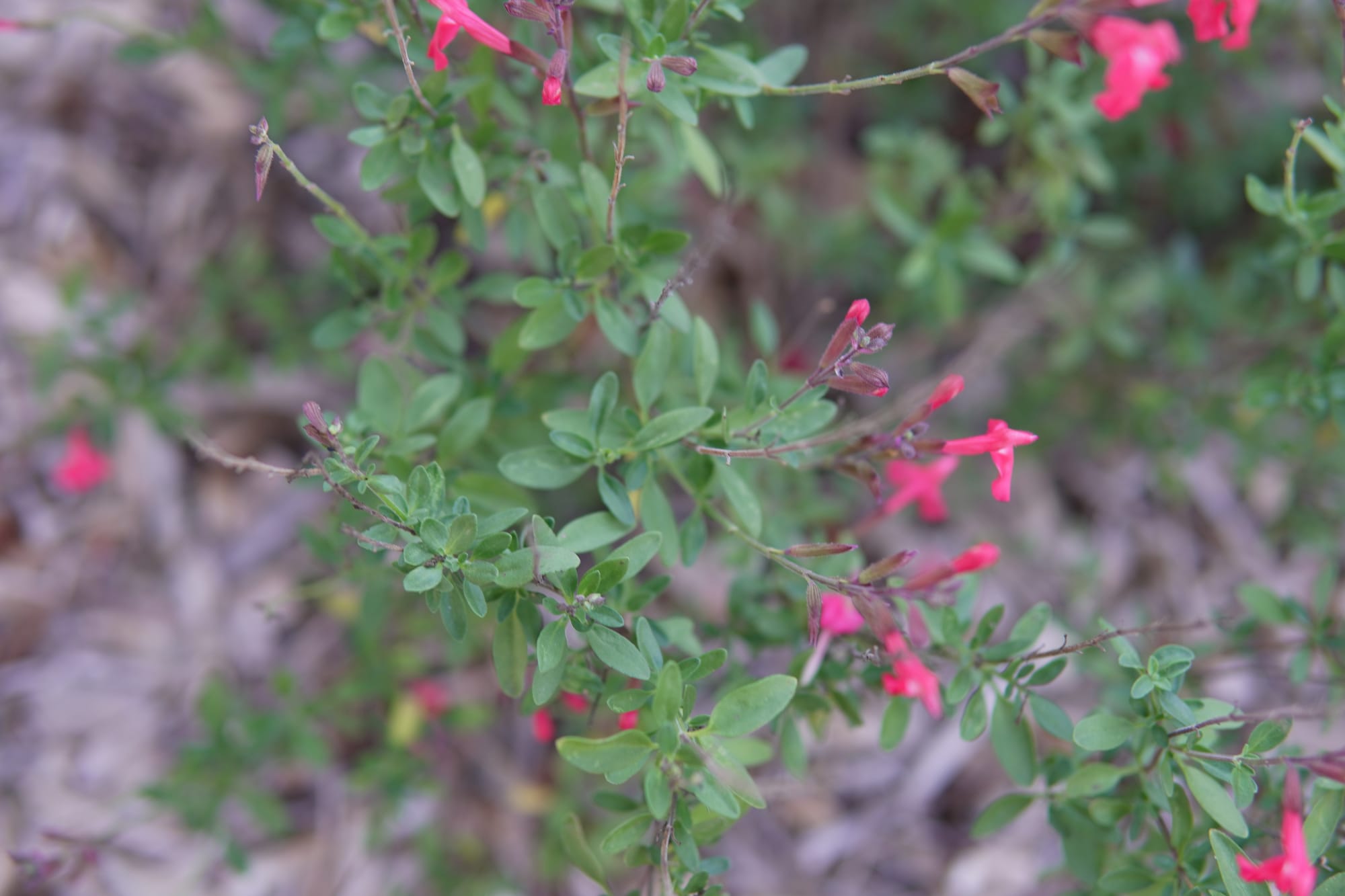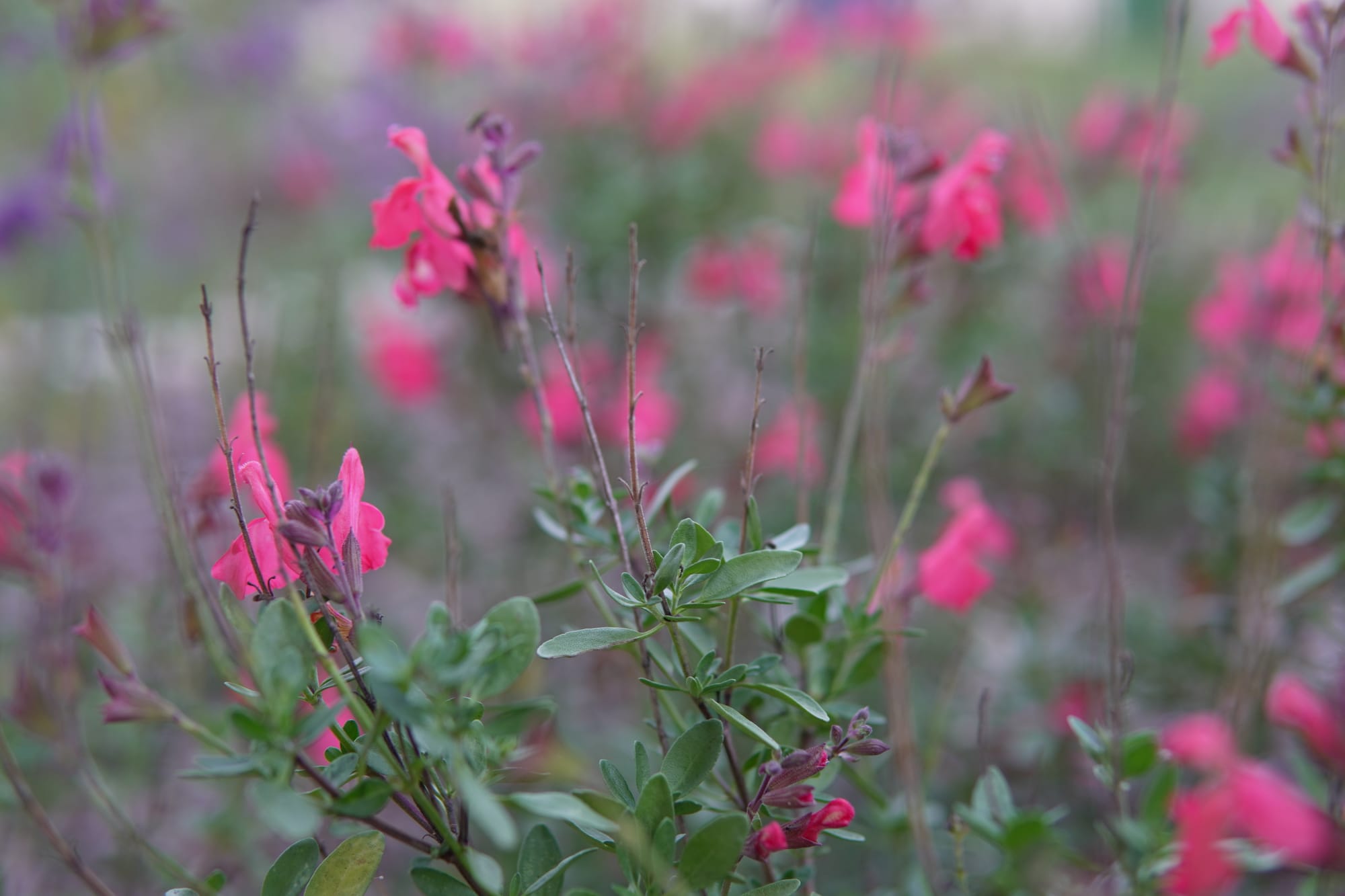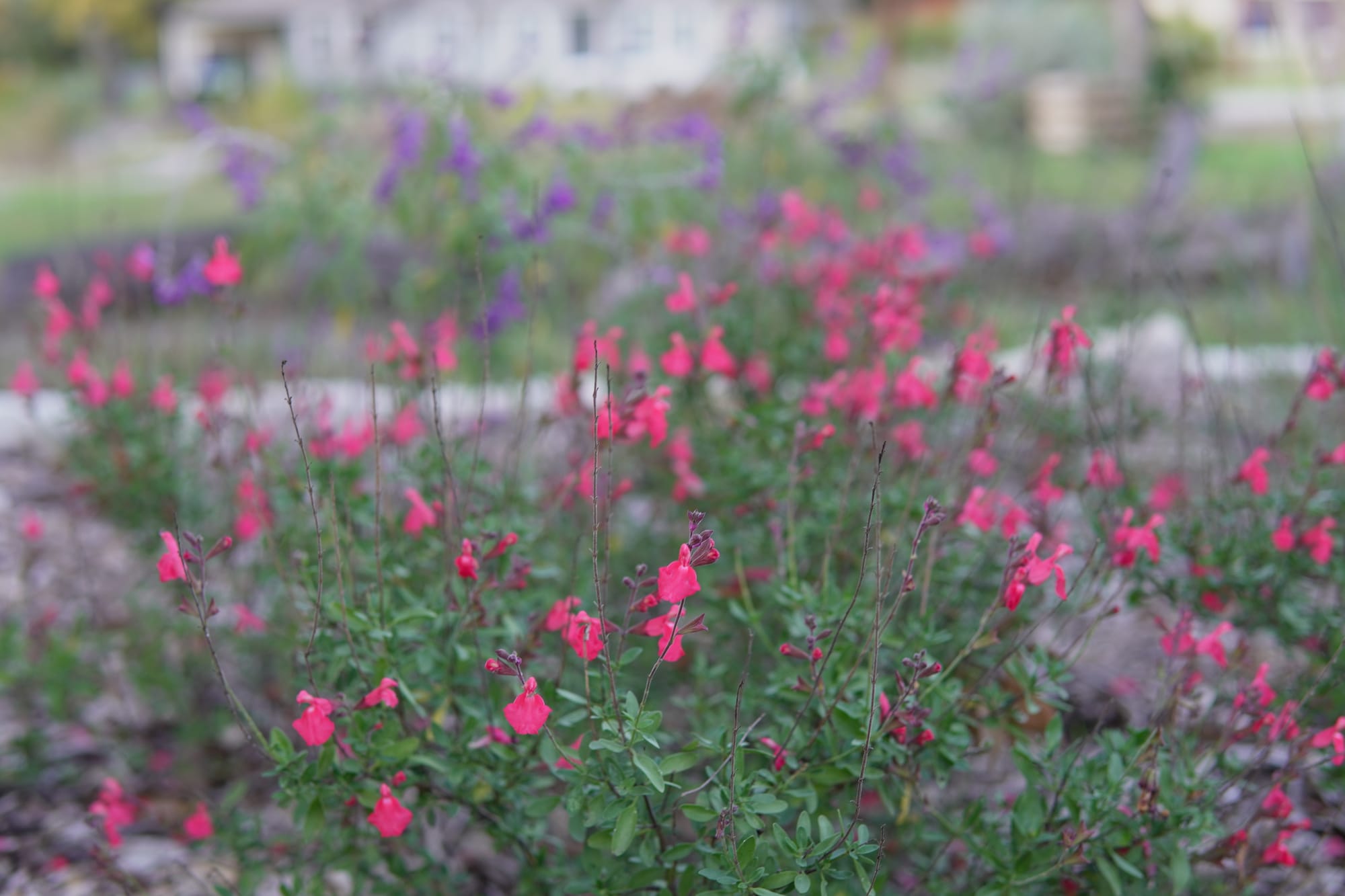Autumn Sage, or Salvia greggii, is a Texas native that brings vibrant color to gardens from spring through the first frost. While it’s most prolific in late fall, this hardy perennial offers bursts of tubular flowers throughout the warmer months, providing long-lasting beauty and ecological value.
Its adaptability to Texas landscapes, combined with its ability to attract hummingbirds and butterflies, makes Autumn Sage an excellent choice for gardeners seeking low-maintenance plants that deliver year-round interest.
Whether planted as a border, hedge, or in containers, this versatile plant is as functional as it is beautiful.
Quick Facts
• Common Names: Autumn Sage, Cherry Sage
• Scientific Name: Salvia greggii
• Family: Lamiaceae (Mint Family)
• Height: Up to 3 feet tall
• Spread: Mounding growth habit, typically 2-3 feet wide
• Bloom Colors: Red, pink, purple, orange, and white
• Bloom Time: Spring, summer, and fall, with heaviest blooms in cooler months
• Light Requirements: Full sun to partial shade
• Soil Type: Well-drained soils; tolerates rocky, sandy, and loamy soils
• Water Needs: Low; prefers dry conditions once established
• Wildlife Benefits: Attracts hummingbirds, butterflies, and bees
Native Distribution
Autumn Sage is native to the rocky slopes of west Texas and parts of northern Mexico, including San Luis Potosí. It thrives in well-drained soils, often limestone-based, where it receives full sun or partial shade. While its natural range includes central, south, and west Texas, this adaptable plant can perform well in most areas of the state with proper care.

Benefits of Autumn Sage
For Your Landscape
Autumn Sage’s vivid blooms and compact, mounding growth habit make it an excellent choice for borders, hedges, and container gardening. Its evergreen foliage (in warmer climates) and aromatic leaves add year-round interest and texture. As a drought-tolerant plant, it’s ideal for xeriscaping and low-water landscapes, providing beauty without demanding excessive care.
For Wildlife
This plant is a favorite among pollinators, particularly hummingbirds and butterflies. The tubular flowers are a rich nectar source, supporting migrating pollinators in the fall. By planting Autumn Sage, you’re not just adding color to your garden—you’re creating a vital habitat for wildlife.
Planting & Care
Where to Plant
Choose a site with well-drained soil, as Autumn Sage doesn’t tolerate waterlogged conditions.
In clay-heavy soils, amend with organic matter or plant on a slope to improve drainage. Place it in full sun to partial shade, avoiding areas with heavy foot traffic, as its stems are brittle.
Seasonal Maintenance
• Late Winter/Early Spring: Prune by one-third to one-half to encourage compact growth and prevent legginess.
• After Spring Blooms: Lightly trim by one-third to promote continuous flowering.
• Late Summer/Early Fall: Trim again to prepare for the fall bloom cycle.
This consistent grooming keeps the plant tidy, promotes blooms, and maintains a lush appearance.

Watering
Once established, Autumn Sage requires minimal watering (if any!), thriving in dry conditions. Supplemental water during prolonged drought can keep it blooming consistently.
Companion Plants
Autumn Sage pairs beautifully with other Texas natives, creating dynamic and pollinator-friendly gardens. Consider these combinations:
• Blackfoot Daisy (Melampodium leucanthum): Low-growing, white flowers contrast with Autumn Sage’s vibrant hues.
• Zexmenia (Wedelia texana): Yellow daisy-like flowers provide a cheerful contrast.
• Lindheimer Muhly (Muhlenbergia lindheimeri): Tall, feathery plumes add texture and height.
• Rock Rose (Pavonia lasiopetala): Pink, hibiscus-like flowers complement the sage’s bold colors.
• Mealy Blue Sage (Salvia farinacea): Lavender blooms pair well with Autumn Sage’s warmer tones.

Seasonal Changes
• Spring & Summer: The plant produces bright, tubular flowers, especially after pruning.
• Fall: Blooms peak, offering nectar for migrating pollinators.
• Winter: In mild climates, the foliage remains evergreen; in colder areas, the plant may go dormant but regrows in spring.
Propagation
Autumn Sage is easily propagated through cuttings or seeds:
• Cuttings: Take 4-6 inch softwood or semi-hardwood cuttings in mid-summer. Remove leaves from the lower half, apply rooting hormone, and mist regularly. Roots typically form within three weeks.
• Seeds: Collect seeds as capsules dry but before they drop. Sow them outdoors after the last frost, lightly covering them with sand.
Sources
Along with my own experience working with Autumn Sage in my Texas landscape here are the books and resources I consulted in producing this page:
🌐 Websites
• Garden Style San Antonio: Autumn Sage
• Lady Bird Johnson Wildflower Center: Salvia greggii
📚 Books
• Native Texas Plants: Landscaping Region by Region by Sally Wasowski and Andy Wasowski
• Texas Wildscapes: Gardening for Wildlife by Kelly Conrad Bender

